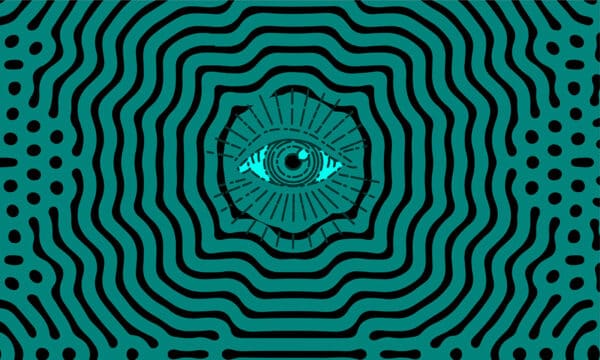Medical Editor: Dr. Lynn Marie Morski, MD, Esq
There has been a surge of interest in psychedelics recently as researchers and those exploring alternatives to traditional pharmaceuticals seek to understand their benefits. One psychedelic used in studies and personal experiments is lysergic acid diethylamide (LSD).
LSD has demonstrated positive effects for psychotherapeutic purposes at full dosage, but many people wonder if smaller, more consistent applications might offer different benefits. This practice is called microdosing, and many people claim that it has significantly improved their lives in various ways.
Curious about microdosing LSD and the potential benefits and risks? Here is a brief rundown of the basics.
What is LSD?
LSD is a classical psychedelic substance known for its hallucinogenic effects. It can enhance or distort stimuli such as sight, sound, and texture, unlock inspiration and creativity, induce profound personal and spiritual experiences, and help a person find deeper connection or meaning.
LSD affects the brain in complex ways. One study showed an increase of activity in the visual cortex, while regions of the brain that create the constructs of self were temporarily hindered, allowing for a dissolution of the ego and disruption of thought patterns that can result in (sometimes negative) habitual behaviors.
The LSD experience varies depending on the mindset, setting, and mental or physical health conditions at the time of application. People typically report an elevated mood, increased energy, a distorted sense of time, deep thinking, and increased feelings of connectedness to others, the universe, or a higher power.
LSD is being studied as a potential aid to psychotherapy in treating certain mental health conditions like alcohol use disorder, opiate dependency, and anxiety related to life-threatening illness. Additionally, there have even been studies demonstrating the possible benefits of LSD for pain relief.
LSD is mostly consumed orally in liquid form, either as droplets or applied to a tab of blotting paper.
What is microdosing?
The term microdosing refers to taking a very small, sub-perceptual amount of a psychedelic substance on a planned schedule in an attempt to benefit from certain effects while avoiding impaired functionality. In fact, the idea is not to alter consciousness but to sharpen it. Advocates of microdosing tout its potential to enhance their ability to perform and enjoy life without the impairments commonly experienced when taking a full dose.
Some people claim microdosing makes them more productive and motivated, improves their mood, alleviates anxiety, helps with cognitive function, bolsters creativity, and elevates the capacity to empathize with others. Others have reported reduced dependency on caffeine or declined inclination to consume alcohol and other illicit drugs like cocaine. Additionally, LSD may have the potential to provide effective pain relief, even at a sub-perceptual dose.
However, research to investigate these claims has been insufficient and somewhat inconclusive. Most of the touted personal benefits of microdosing are self-reported or anecdotal, leaving many questions about other factors that could influence individual results from microdosing.
There is a possibility that some people who experience benefits from microdosing experience a placebo effect. In the largest placebo-controlled study on microdosing, both the placebo group and those who microdosed psychedelics reported a similar rate of positive psychological effects. This also highlights the power of the human mind.
How do you microdose LSD?
Because so little is definitively known about microdosing, it is difficult to say with certainty what the ideal dosage or frequency should be for different individuals. However, there seem to be some guidelines commonly shared by the psychedelic community and substance experts that seem to have yielded positive results for those who have tried them.
James Fadiman, a clinical psychologist and author with expertise in the exploratory use of psychedelic substances, has been one of the leading sources of information about how to experiment with microdosing. He recommends a microdose that is one-tenth of a typical dose; this equates to about 10-20 micrograms of LSD.
It’s recommended to be conservative in the beginning, as taking too much may result in unintentional, inconvenient, or unsafe impairment. A general rule with ingesting any dose or type of psychedelic is to “start low, go slow” to determine how the body will react to the particular medicine. The best way to avoid taking too much is to properly measure each dose and maintain a record of when and how much LSD has been consumed.
Common practice is to have a “dose day” every three days, taking two days to rest between them. Many who microdose LSD report adhering to this schedule for a period of two weeks several times a year as a form of occasional maintenance.
What are the side effects and risks of LSD?
Sometimes, the experience feels immensely meaningful in a positive way, but it is also possible for the effects of LSD to be challenging, frightening, or even disturbing. Though the small dose is not likely to cause overwhelming, negative hallucinations, there is a lack of research to determine the possibility of negative psychological reactions to LSD when microdosing.
It is not recommended for people with a personal or family history of psychosis to use psychedelics like LSD. While rare, there have been reports of “flashbacks,” where a person continues to recall certain unpleasant hallucinations that occurred while taking LSD. Because of the sub-perceptual dosage used to microdose psychedelics, this phenomenon is highly unlikely but still ought to be a consideration (particularly for those at risk of mania and psychotic episodes).
Some physical side effects of LSD may include dilated pupils and elevated blood pressure and/or heart rate. People with heart conditions are advised not to use LSD, as it can cause additional health complications that may become dangerous. Even in small doses, LSD has the potential to cause anxiety or physical discomfort.
For more information about the side effects and risks of LSD, check out Psychable’s Beginner’s Guide to LSD .
Closing thoughts and resources
There have been many reported benefits of microdosing, but because most advocates present personal or anecdotal evidence that has not yet been scientifically confirmed, it is difficult to say whether or not the practice has proven benefits. However, studies and analyses of findings seem to indicate a promising future for discoveries of potential uses for psychedelic medicine, including the practice of microdosing.
It should be noted that LSD is currently a Schedule I drug, making it illegal for personal use in the United States. Seeking to obtain or use LSD outside of an approved clinical trial setting is punishable by law at this time.
For additional information about microdosing, read Psychables Beginner’s Guide to Microdosing as well as our Pros and Cons of Microdosing .








